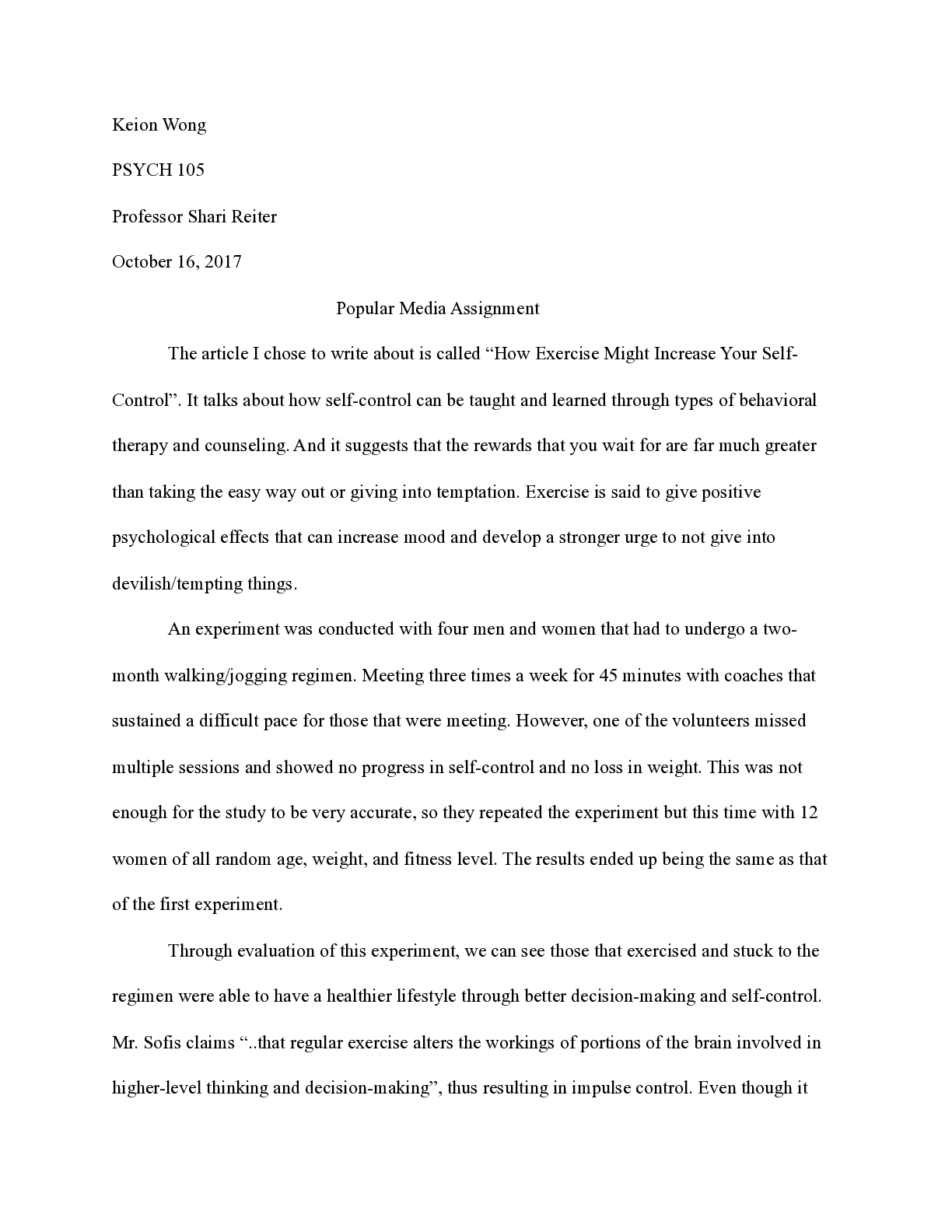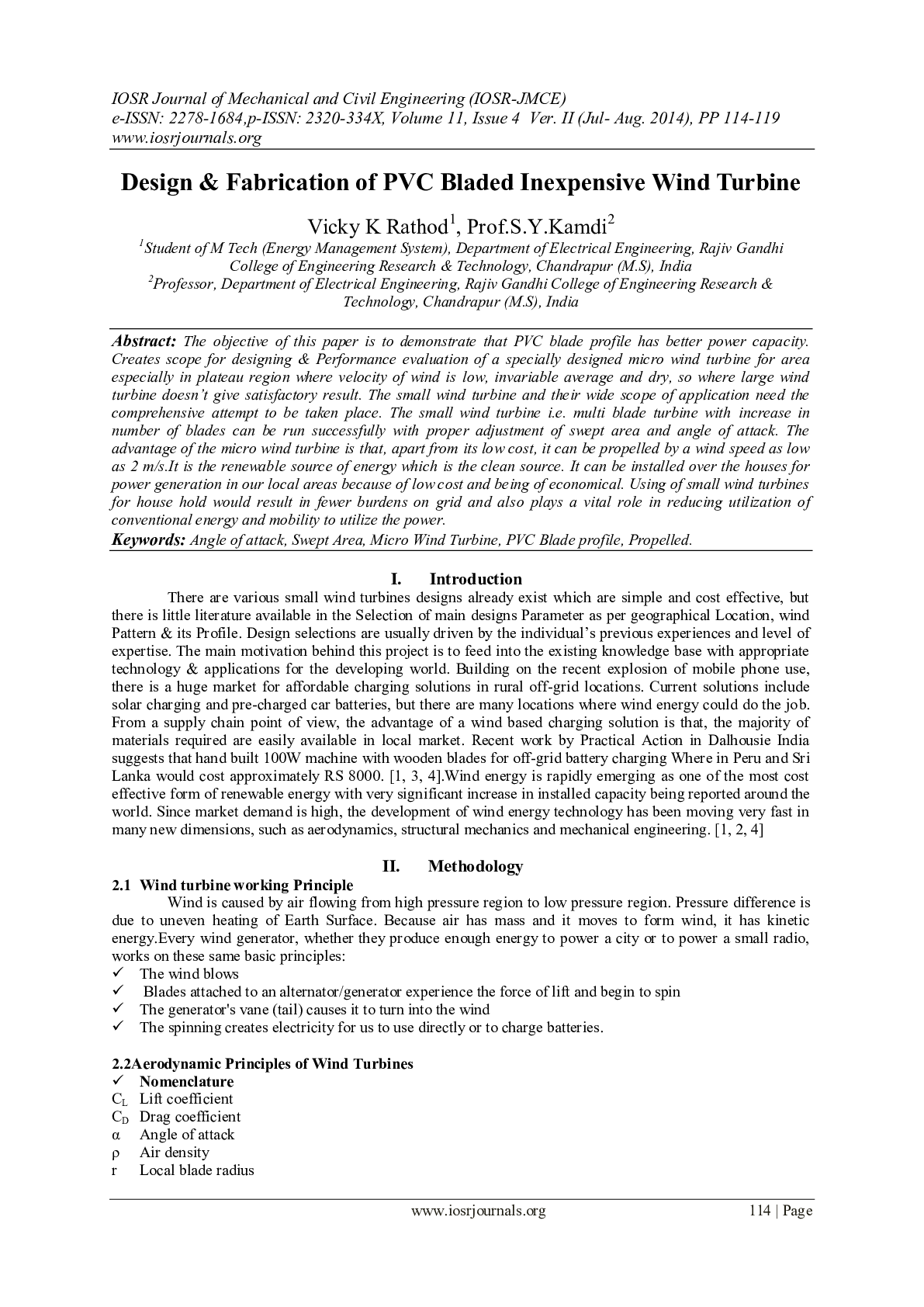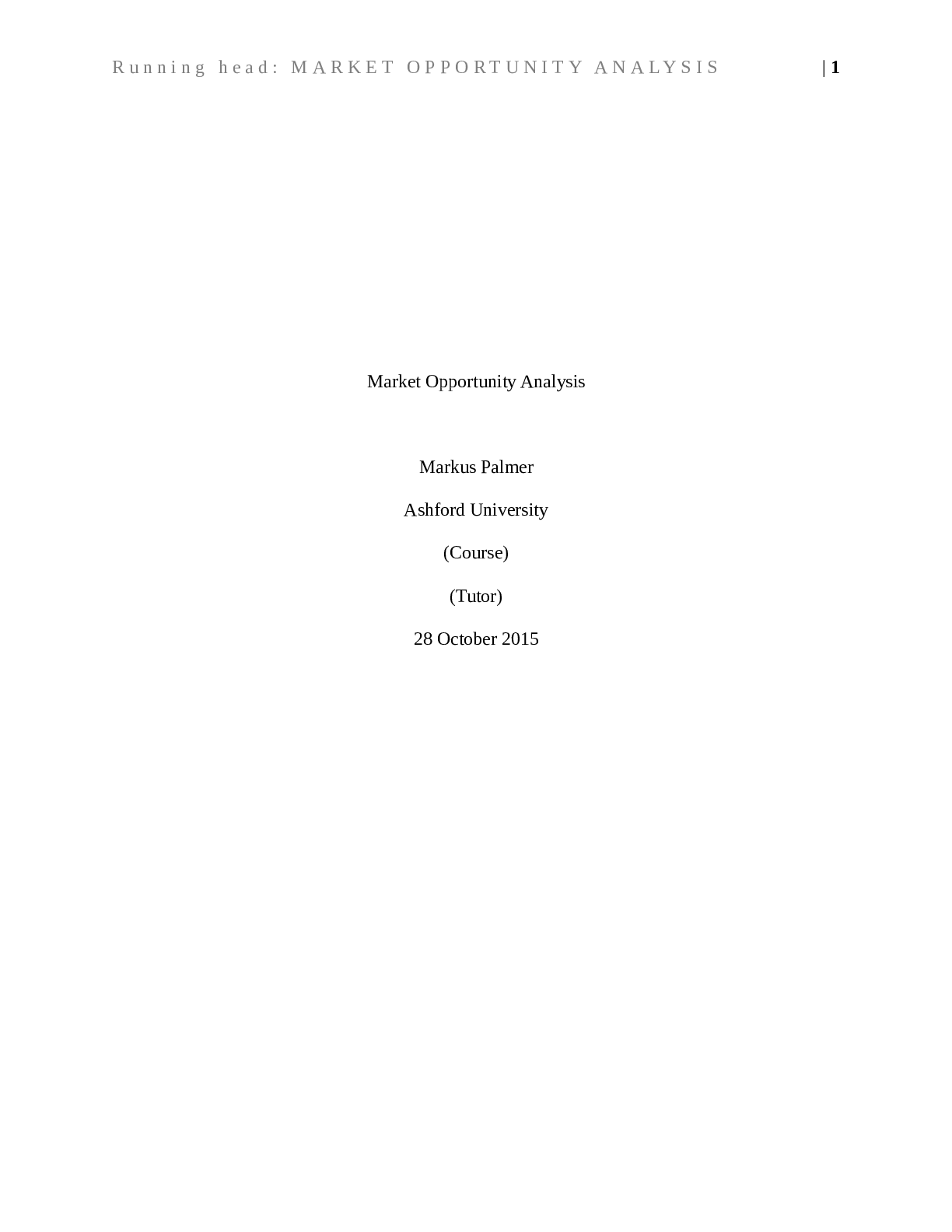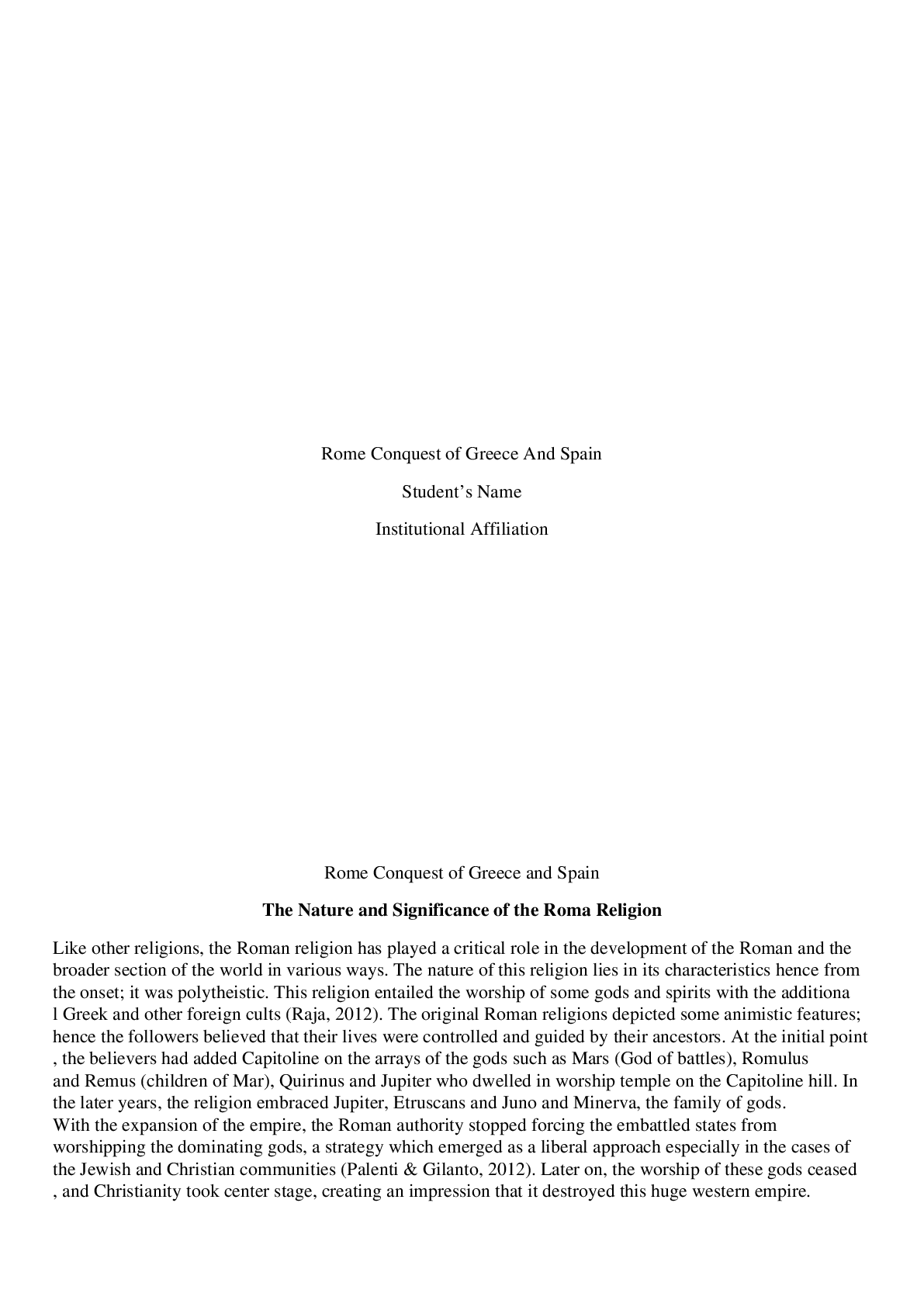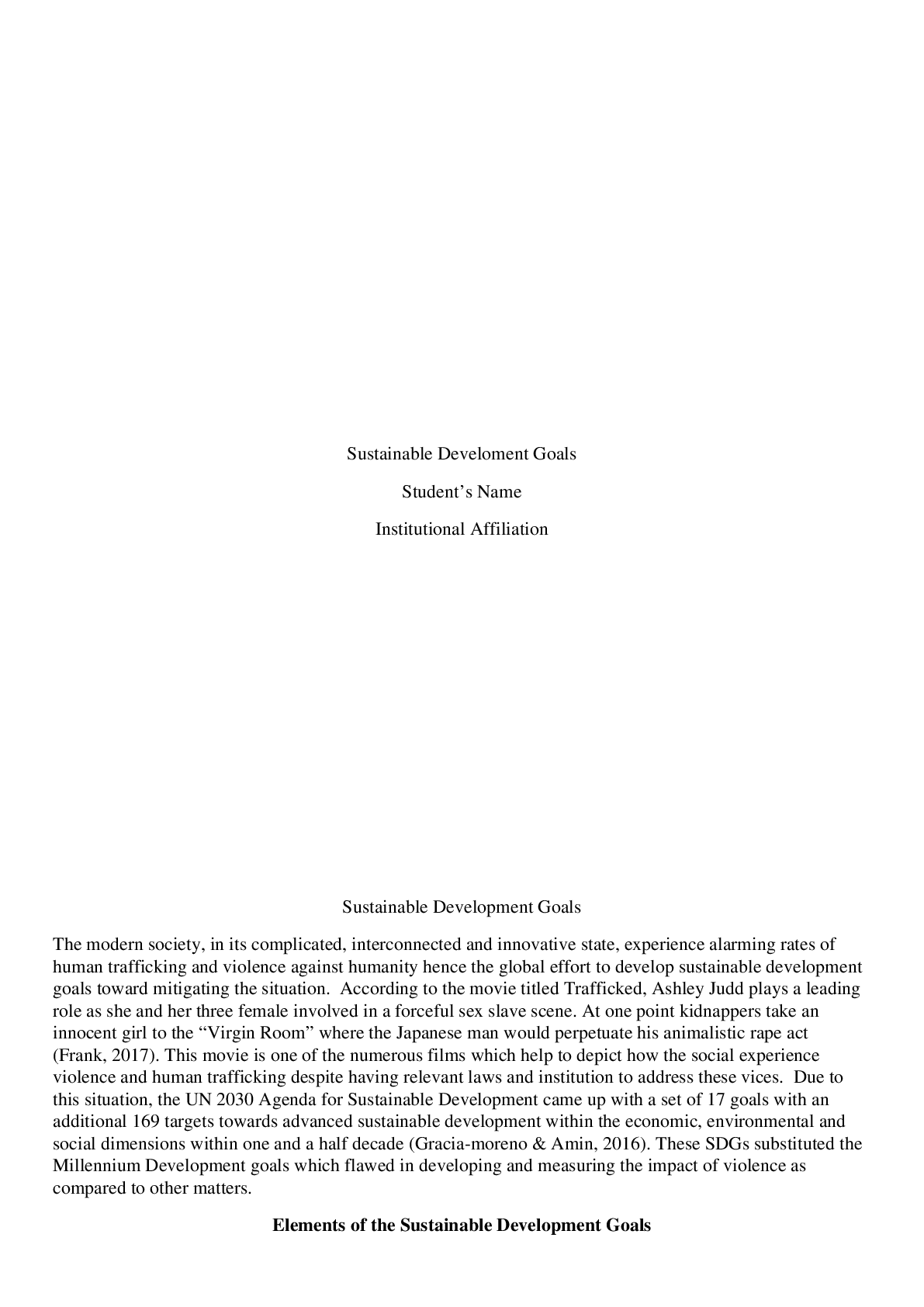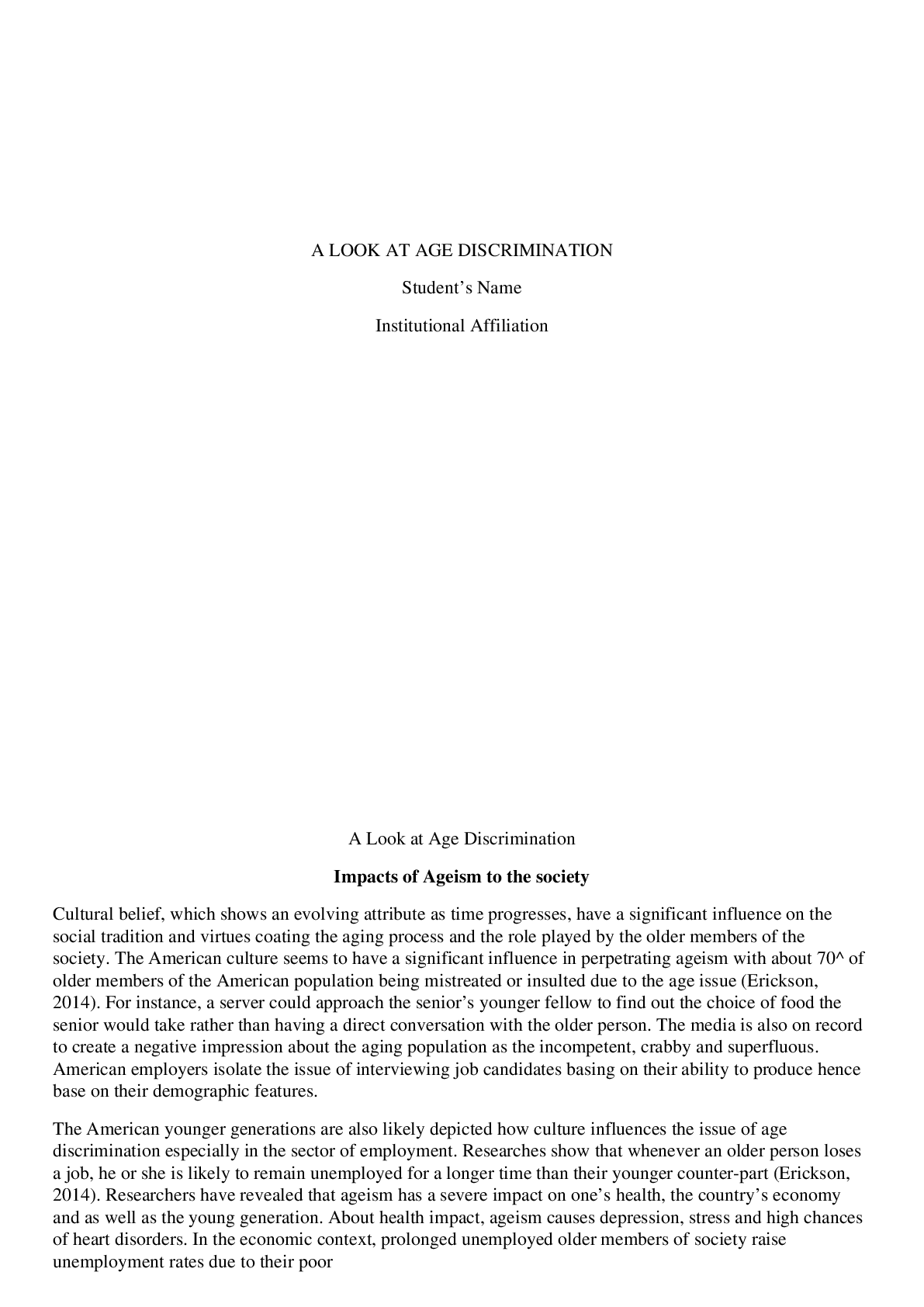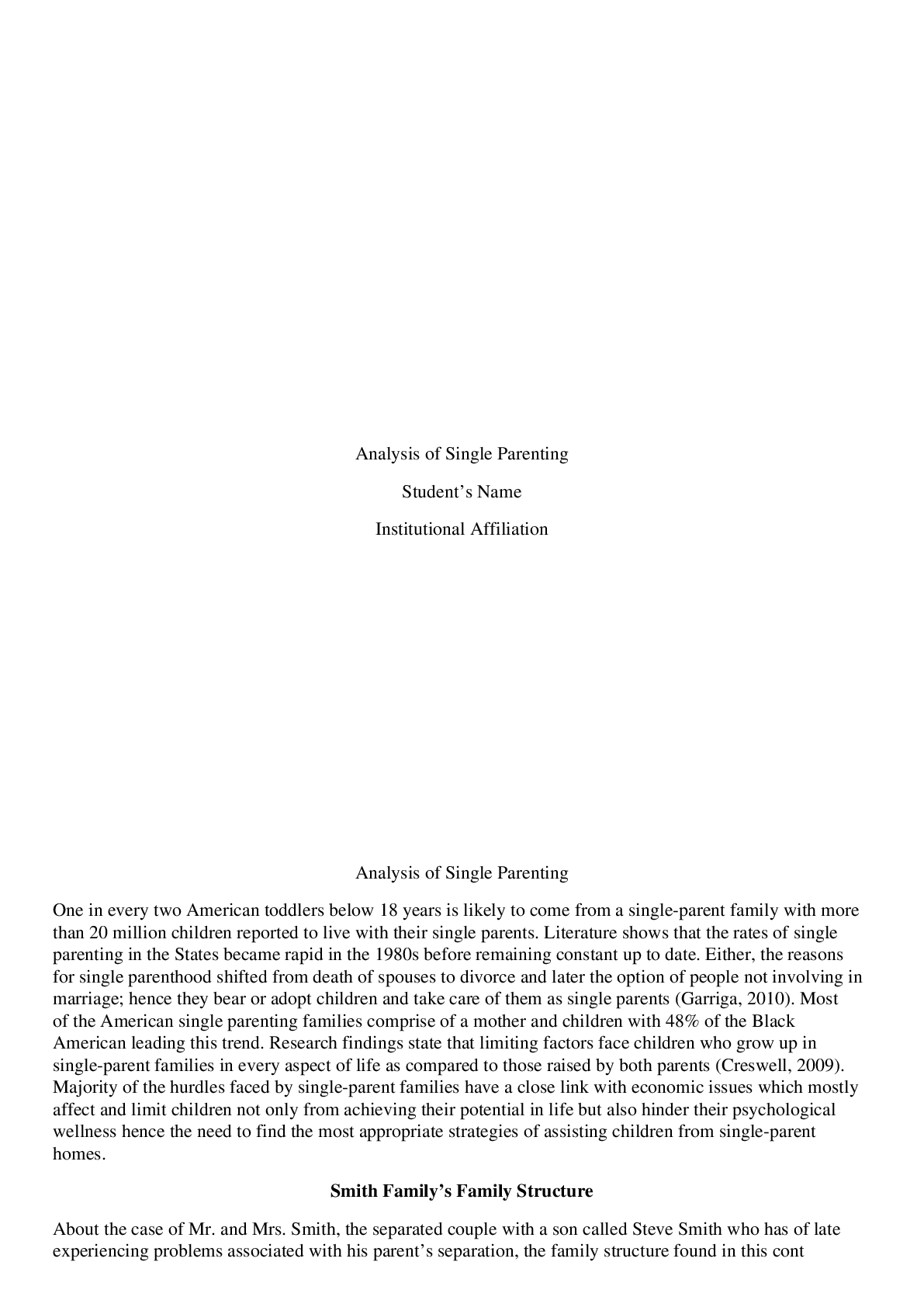ARGUMENTATIVE ESSAY EXAMPLE
Document Content and Description Below
Effects of Deforestation on the Environment Student’s Name Institutional Affiliation Date The ecosystem provides natural resources that help human beings in their overall surviva... l. Among these are trees, and they are important in the environment because they keep the climate balanced through activities like absorption of and release of oxygen as well as regulating the supply of water in the environment. More than half species of the world live in forests as their natural habitats, and it is also reported that more than 1 billion individuals in the world live in and around the forests. These people depend on trees for fuel, medicine among other products for survival and this makes trees very important in the ecosystem. However, due to increased population growth, many forests get cleared so that they can accommodate the human population. forests have also been cleared to make room for industrial, urban and agricultural use because of reliance of trees for raw material is production of paper, medicine and firewood, forests have been getting cleared and this has been causing adverse effects on the environment. Deforestation is described as the cutting down of trees leaving the land bare, for human use. When trees are cut the entire suffers as and therefore the following will show that deforestation causes, soil erosion, desertification, and climate change. When are trees are cut down, the soil is left bare without anything to hold it and this causes excess movement of soil incase when there are strong winds or rains. Therefore, soil erosion is the wearing away of top soil of a land. Erosion can be caused by water, wind and tillage and through these processes soil detachment is experienced. The top soil that is taken away is important because it is very fertile as it contains high organic matter which is useful in growth of crop. When trees are cut down, the process of soil erosion does not take place immediately, rather it happens gradually until all the top soils is taken away. The effects of soil erosion may also include; increased soil acidity, loss of soils structure, bad internal drainage, salinization, decreased organic matter, and soil compaction (Werth & Avissar, 2002). When the effects are experienced in the environment, other adverse effects arise from soil erosion creating a vicious cycle of adverse effects on the climate and human beings. For example, productivity of crops is reduced because crops cannot use stored water the soil and hence this might contribute to drought and hunger. Healthy soils also provide reduction of surface evaporation and increase the efficiency and productivity in farming. If the soil used in farming does not the following factors, crops will be planted and wither immediately because the soil does not contain the necessary temperaments to help the crops survive, and this makes it hard for agricultural activities (Hajabbasi, et al., 1997). As people cut trees, they create a lot damage to the environment. Soil erosion can be prevented by reforestation and this helps in holding the soil together, as it will be carried away by rain or wind. Therefore, people should be encouraged trees in areas that are bare so that soil erosion is controlled and the ecosystem is revived. Desertification is the greatest challenge that the world is facing due to cutting down of forests. Desertification is the degradation of dry land whereby the biological productivity of the land is completely lost and it is caused by cutting down of trees. Desertification occurs through the spread of arid and semi-arid and semi-arid areas when soil has been fully exploited due to human activity. Through adverse climate change and land mismanagement, it gets to a point where the land cannot hold water and even support growth of any crop (Geist, & Lambin, 2001). When a land becomes unproductivity, it means that it has undergone all forms degradation. Such types of land become unbearable to survive in both for humans, animals and plants, and to survive there, the creature have to have special adaptation features that allow them to live in such lands. Because the areas have no trees, the places are not able to receive substantial amounts of rainfall. Even when it rains that water is not retained and it evaporates very quickly because the lands have very thin soils to retain water. Through deforestation over the years, the amount of dry land all over the world is represented by 38% of the worlds land coverage. Through such a high number, it is evident that cutting down of trees has become very common in most parts of the world and the action should be controlled, and if not, the number is bound to increase, and human and animal survival might get strained (Shukla, et al., 1990). Desertification has a serious socio-economic consequence to the environment and this indicated by change in land settlement, population, and increased migration from one area to another. If people over use the resources in one area, and they migrate to another area, they might cause the same problem and this is why people should be encouraged to stop deforestation so that their environment can be sustainable to them. Forests play a very important role in controlling and regulating the global climate. Forests take part in the absorption of emissions from the air playing an important role of a storage system for the greenhouse gases that have the highest contribution to global warming. Through study done on the environment it was reported that trees have the ability of holding more than a third of carbon dioxide reductions that are supposed to keep global warming below two degrees (Allen & Barnes, 1985). Apart from that they play the role of conditioning the air in the nature, through transpiration. Because of this, when the trees are cut down, increased temperatures are observed and this leads to climate change, which is global warming. For example, forest in Amazon and Congo basin are important in the environment because they store the most carbon and therefore when they are cut down the amount of oxygen in the environment increases and this leads to very high temperatures hence changes in climate. Deforestation is very common in these areas as it is reported that more than 300 million trees were cut down between 2001 to 2015 and the numbers have been increasing since then. The climate changes are already been experienced today because the rise in water in water bodies has increased over the years and the rain patterns are experienced year in year out. Lack of rains during the planting seasons has caused less crop production and if this continues the humanity might become unsustainable. Because of global oceans have been experiencing imbalances and this has caused increased cyclones and floods which in the past have reported to have killed very many people. Due to climate change, there is also rise in droughts and this is a danger to human survival. Even though deforestation is seen as a negative thing, there are several reasons why the practice can be viewed with a positive eye. Deforestation is a means of livelihood for many people. Many farmers who cut down trees sell them to improve their ways of living. In doing so, the cut trees are sold to make coal which is later sold as fuel and this is also beneficial to households in cooking. The cut trees are also used a raw material in the construction industry creating aesthetic homes for people, hence giving them a source of shelter, which is a basic human need. Trough deforestation, farmers are able to grow crops which they can sell to create a livelihood for themselves. Apart from that, deforestation makes the expansion of infrastructure possible and it paves way for roads and rails and this aids in transportation. Through this, human movement is made easier and people are able to access different parts of the world. cutting down trees also acts a source of raw material for production of things like paper, toothpicks, timber, among others. Deforestation is also source of employment as cutting and processing of trees requires man power and through this, the living standards of people are improved hence growth in the economy is also experienced. The process is also impactful in industrialization, which is one of the most significant growth of the economy. Through the large areas of lands that are attained during deforestation, it is easier to set up manufacturing plants and through manufacturing of goods the economy is always expected to boom. Therefore, deforestation has a lot of disadvantages both for human beings and the economy at large. With a good economy, sustainability is improved which is an advantage to the people. Conclusively, the effects of deforestation are more adverse than the benefits that people get from cutting down trees and therefore, deforestation is not a practice that should be embraced. Deforestation causes soil erosion, desertification and change in climate. Recently, we have observed changes in weather patterns where rains are delayed and when they come, they cause damage. Climate change has brought tsunamis and tornados that have killed so many people. The effects of deforestation bring gradual change in the environment through a slow process and by the rim people realize that they need to do something about it, it is usually too late. For example, cutting down would not take someone more than one hour but growing a tree to maturity will take more than three years and this shows that when it’s time to reverse the process, a lot would have been lost. Through government directives it should be made very hard to cut down trees, and when this is implemented, the climate will be protected. In areas that trees have been cut down in large numbers, more trees should be planted so that the balance in climate is restored. References Allen, J. C., & Barnes, D. F. (1985). The causes of deforestation in developing countries. Annals of the association of American Geographers, 75(2), 163-184. Geist, H. J., & Lambin, E. F. (2001). What drives tropical deforestation. LUCC Report series, 4, 116. Hajabbasi, M. A., Jalalian, A., & Karimzadeh, H. R. (1997). Deforestation effects on soil physical and chemical properties, Lordegan, Iran. Plant and soil, 190(2), 301-308. Shukla, J., Nobre, C., & Sellers, P. (1990). Amazon deforestation and climate change. Science, 247(4948), 1322-1325. Werth, D., & Avissar, R. (2002). The local and global effects of Amazon deforestation. Journal of Geophysical Research: Atmospheres, 107(D20), LBA-55. [Show More]
Last updated: 2 years ago
Preview 1 out of 7 pages

Buy this document to get the full access instantly
Instant Download Access after purchase
Buy NowInstant download
We Accept:

Reviews( 0 )
$5.00
Can't find what you want? Try our AI powered Search
Document information
Connected school, study & course
About the document
Uploaded On
Sep 08, 2021
Number of pages
7
Written in
Additional information
This document has been written for:
Uploaded
Sep 08, 2021
Downloads
0
Views
85















